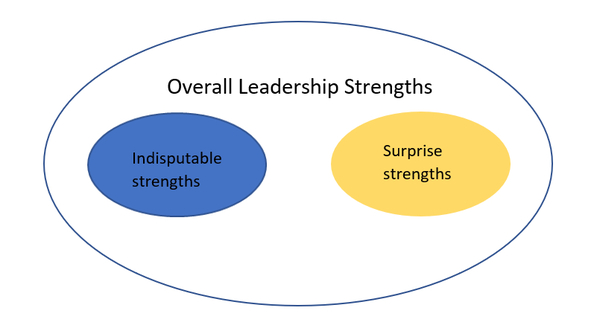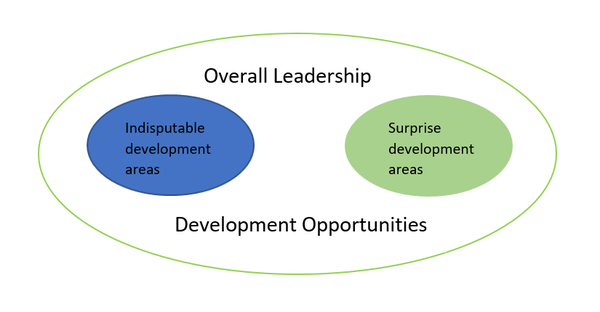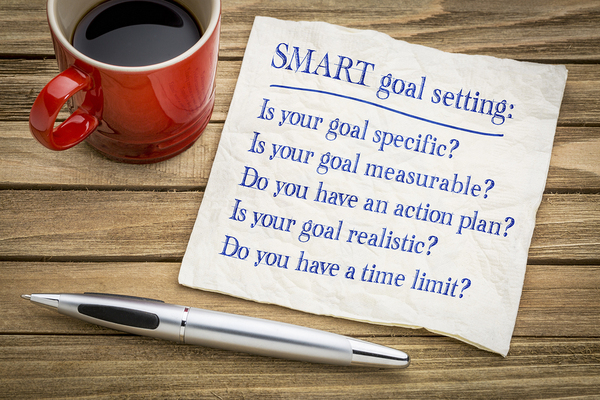THE WORLD’S #1 EXECUTIVE COACHING AND BUSINESS COACHING BLOG SINCE 2017.
Definitive Guide to Executive Coaching Tools
Published On: February 7, 2019 | Last updated on: January 9, 2025 | Author: John Mattone | Category: Blog, Executive Coaching
To do good work, you need good tools.
Most of us think of tools as devices like hammers, crescent wrenches, and screwdrivers – things that are used in the construction of something else. But tools are part of every endeavor, whether you’re building a house, harvesting fruit in an orchard, or building a strong and thriving business.

Whatever your task, doing it well requires having the right tools.
Tools are just as necessary in non-manual labor as they are in manual labor. If nothing else, a pen and some paper are tools used to map out thoughts and plans and write down insights. In business, we rely on our computers, printers, telecommunications equipment, and office machinery, all of which are tools of the trade.
And when it comes to executive coaching, the phrase “You are only as good as the tools you use” is especially apt. Much of coaching involves what goes on in the mind, but that doesn’t mean tools are unnecessary.
Coaching depends on great communication between coach and client, and not all of that can take place in person. Therefore, telecommunication tools are necessary to a strong coaching relationship. Coaching also involves assessing baseline skills and goals, mapping out plans for reaching goals, tracking progress toward goals, and evaluating success and lessons learned once the process is over.
All of these processes involve the use of various kinds of executive coaching tools. Different coaches use different specific tools, but many of them are of the same type, e.g. tools for assessing client strengths and weaknesses. This is your guide to executive coaching tools, their types, what they are designed to do, and specific examples of the tools used by renowned executive coach John Mattone.
In the Beginning: Assessment and Goal Clarification
Client intake is the phase of executive coaching where the coach and client establish their relationship and develop a working partnership. During this phase of executive coaching, the coach must get to know the client in their business context so both partners can agree on what the coaching relationship will focus on.
Most coaches come to the intake session with a set of business-oriented questions that will likely include some personality-related questions as a way to get to know the client they will be working with for the next several months.
Many of them also use assessment tools to gain a sense of the client’s style and preferences. Examples of many available assessment tools include:
- The DiSC profile, which is a tool used to elucidate and discuss people’s behavioral differences
- The Myers-Briggs Type Indicator (MBTI), which is based on Jungian psychology and helps clarify how seemingly random behavior variations add up to one of 16 different personality types
- The Social Styles matrix, which identifies four social styles based on assertiveness and responsiveness
During intake, executive coaches often have clients complete some sort of goal sheet, because after all, what is coaching about if not about defining and achieving goals? Also during intake, both coach and client will read, discuss, and sign a confidentiality agreement. These vary from coach to coach but are meant to ensure that the client can be candid with their coach without fear of information being shared with others. It may include provisions for the coach using (with the client’s express permission) the client’s experience for future testimonial or marketing purposes.
During the Coaching Process
During the executive coaching process, both clients and coaches typically use a handful of selected tools to ensure that the process stays on track. This is not to say that once goals or processes are agreed upon that they can never change. Course-correction happens in coaching sometimes, once issues emerge as being of higher or lower priority.
Certain executive coaching tools help clients stay on track between meetings with their coach.
Coaching clients will tend to use tools offered by the coach that help them address their coaching goals. For example, if a client has difficulty prioritizing tasks, their coach may provide them with a prioritizing tool that makes it easy to separate more urgent from less urgent tasks and work on them in order of importance. These tools can also help develop more productive habits by, for example, setting out in advance which interruptions can be ignored for the time being and which must be addressed then and there.
Action tracking tools can also be useful during the coaching process. Not only can action tracking tools help coaching clients stay on track as far as reaching their goals, but they can also serve as a source of motivation and discipline from seeing how much progress they have already made. Some goals may be tracked daily, while others may be tracked less often.
Coaches and clients typically use multiple tools for regularly interacting with each other. Communication may take place on a regular schedule via phone, email, live chat, video conference, or some combination of technologies.
Concluding the Coaching Process
The executive coaching process comes to an end at some point, but that doesn’t mean the work is over and done with once and for all. Many coaches, in fact, build post-coaching follow-up into their service packages. We all know that skills can fall into disuse, and that old habits can creep back in if we’re not careful. That’s why many executive coaches have planned follow-up phone calls during the several months following the end of their formal coaching contract.
Clients may be encouraged(or may choose on their own ) to continue using tools that worked for them during the active coaching period, like priority matrixes or action tracking tools. This is a smart idea, because once the habit is developed, it’s easier to maintain than it is to let the habit lapse and then try to start again later.
The changes wrought during the coaching process are meant to be long term, and the coaching process itself helps people understand the importance of follow-through when it comes to achieving goals. But that doesn’t mean that people who have undergone executive coaching have reached some sort of competency nirvana where they no longer need productivity tools.
John Mattone Executive Coaching Tools
John Mattone is one of the world’s most in-demand executive coaches as well as being a leadership speaker and best-selling author. He is considered one of the top three coaching authorities in the world and was awarded the Master Corporate Executive Coach (MCEC) certification from the Association of Corporate Executive Coaches.
Mattone’s Intelligent Leadership was named one of the Top Advanced Leadership Development Programs that Change Lives in 2015, and he is the creator of the Intelligent Leadership (IL) Executive Coaching Process. In his decades as an executive coach, he has created a world-class blueprint for his unique coaching process, which includes several powerful executive coaching tools. The Six-Step Individual Development Plan, the Strategic-Tactical Leadership Inventory (STLI), and the Mattone Leadership Enneagram Index (MLEI) are three of these executive coaching tools.
Six-Step Individual Development Plan
The Six-Step Individual Development Plan is outlined in John Mattone’s book Powerful Executive Coaching. It is an assessment-driven individual development plan involving six key steps.
Leadership potential is based on strengths clients know they have and strengths they haven’t yet discovered.
It is based on assessment data that identify indisputable strengths, surprise strengths, indisputable development needs, and surprise development needs, which form the foundation for goal-setting and identification of action steps. Here are the six steps in the plan.
- Step 1: Analyze Your Job. This is the step in which clients identify the several competencies, skills, interpersonal qualities, and internal attributes required for success. After listing these, clients must describe what they think is the most important for each area.
- Step 2: Review Perception-Based Assessments. In this step, the client reviews results of assessments by peers, managers, and direct reports to learn what those assessments reveal about strengths and opportunities for improvement.
- Step 3: Review Objective-Based Assessments. This step is a review of objective assessments, such as skill-based simulations, the MBTI, and others followed by identification of strengths and opportunities for improvement based on these assessments.
- Step 4: Data Integration. In this step, data from objective assessments are compared and contrasted with data from subjective and self-assessments in terms of indisputable and surprise strengths, and indisputable and surprise development opportunities.
- Step 5: Data Integration Summary. Here, the client identifies the two strengths and development opportunities they believe to be the most important to success, to arrive at one strength and development opportunity each for intrapersonal attitudes, interpersonal qualities, and competencies.
- Step 6 Development Planning. In this step, the client and coach work together to create an individual development plan, complete with development goals in the four key categories of indisputable strengths, surprise strengths, indisputable development needs, and surprise development needs.
Some development opportunities are obvious, others, less so.
With this information, it is possible to define the action steps for effective coaching. Those action steps may include on-the-job development, training courses, leadership coaching programs, and emphasis on “high-development” practices (such as increasing decision-making authority or launching a new project).
Strategic-Tactical Leadership Inventory (STLI)
John Mattone’s Strategic-Tactical Leadership Index (STLI) is an assessment tool that determines a client’s current performance on nine key competencies. It is detailed in his book Intelligent Leadership: What You Need to Know to Unlock Your Full Potential and Powerful Executive Coaching. The STLI is designed to isolate a client’s most effective competencies as well as competencies that need to be developed further. The STLI can also be used as a “multi-rater” tool to obtain feedback from employees, peers, managers, and other stakeholders. This is recommended because it offers a more complete picture of the client than the STLI used as a self-assessment alone. The STLI addresses the following nine key competencies.
- Critical Thinking – how effective the client is at thinking skills like recognizing underlying assumptions in their own thinking, analyzing information, and bringing together a diverse range of information to solve problems
- Decision-Making – the client’s competence at collecting and analyzing relevant data, assessing the impact of alternate decision scenarios, and making decisions that align with the core values of their organization
- Strategic Thinking – how well the client knows the business environment and their organization, and how competent they are at developing a realistic vision that engages and inspires others while aligning actions with the organization’s mission and goals.
- Emotional Leadership – the capability of the client for self-awareness, character, and the use of positive thinking to help build a positive culture geared toward achieving organizational goals and maintaining organizational values
- Communication Skills – how well the client demonstrates an open and approachable style while being able to articulate viewpoints accurately, persuasively, and honesty so as to solve problems and pursue goals effectively
- Talent Leadership – a measure of how well the client knows and applies the competencies that lead to lasting success, while recognizing the critical importance of human capital, on an individual and team level
- Team Leadership – the ability to demonstrate versatility as well as constancy of direction for the team, collaborating, using creativity, keeping people informed, and building a positive team and company culture
- Change Leadership – the client’s skill at convincing others of the need for change, providing an “anchor” during changing times by reaffirming values and goals, and effectively implementing plans and processes for achieving change
- Drive for Results – how decisive the client is in thought and action, how well they set achievable, but ambitious goals rather than “settling,” and how well they maintain discipline when disruptions detract from key objectives.
Coaching is about learning to envision, define, work toward, and accomplish leadership goals.
Mattone Leadership Enneagram Index (MLEI)
The Mattone Leadership Enneagram Index (MLEI) is an executive coaching tool for identifying predominant leadership styles as well as levels of maturity in individuals. The person completing the MLEI indicates how strongly they agree or disagree with a targeted series of statements. The nine leadership types assessed by the MLEI reveal the full range of the client’s leadership assets and liabilities. Although the MLEI will indicate a predominant leadership type, it also reveals several subtypes.
The goal of taking the MLEI is to use the information it produces to optimize the maturity of the predominant leadership trait while creating development goals and strategies to produce maturity in the other key leadership traits. No single leadership trait is better than the others, because people lead in different ways.
The most evidenced leadership traits represent areas of leadership potential that are already activated, whereas the least evidenced (lowest scoring) leadership traits represent areas that can be developed and brought out through executive coaching. A total of nine leadership styles are grouped into three categories: Heart Leaders, Head Leaders, and Gut Leaders, as you can see in the following table.
| Heart Leaders | Head Leaders | Gut Leaders |
| The Helper (empathy and altruism) | The Thinker (mental focus and expert knowledge) | The Driver (self-assertion and leadership) |
| The Entertainer (self-esteem and self-development) | The Disciple (trust and perseverance) | The Arbitrator (receptivity and interpersonal mediation) |
| The Artist (self-awareness and artistic creativity) | The Activist (spontaneity and diverse activity) | The Perfectionist (ethical standards and responsibility) |
The MLEI does not indicate “fixed” traits, and if a client takes it multiple times, such as at the beginning, and again at the end of the coaching process, scores for all but the most predominant trait may fluctuate.
Conclusion
The most accomplished coaches take their executive coaching tools very seriously because they rely on them to understand their clients, create strategies, and measure progress. Coaching clients should take these executive coaching tools seriously as well because they serve a crucial function: ensuring the best positive results from the coaching relationship.
The tools used at the beginning of the coaching relationship are often related to baseline assessments. They may assess personality traits, work styles, and attitudes. These assessments help drive use of other tools, such as goal-setting tools so that both coach and client understand the goals that the coaching relationship will work toward.
During coaching, monitoring, tracking, and documentation tools are frequently used. They’re designed to ensure that the client stays on track and makes progress. Telecommunication tools are most heavily used during the active coaching process so that coach and client can stay up to date on progress and challenges.
When the coaching term ends, the client may re-take certain assessments or may take new assessments to gauge how far they have come. Some executive coaches leave their clients with tools they can use to ensure that their hard work continues to pay off.
Coaches often leave their clients with special tools they can use to ensure continued growth and success.
If you want to learn more about executive coaching tools, consider reading John Mattone’s books, especially Intelligent Leadership: What You Need to Know to Unlock Your Full Potential and Powerful Executive Coaching.
Glossary of Terms
Action Trackers – tools for daily use to ensure steady progress toward goals
Assessment Tools – tools used to evaluate where a person is in a given context through key questions that, when answered honestly, provide a clear baseline picture
Mattone Leadership Enneagram Index (MLEI) – an executive coaching tool developed by John Mattone to identify predominant leadership styles as well as levels of executive maturity in coaching clients
Prioritization Tools – tools designed to help users understand their responsibilities and rank them in priority order so that they ensure the most important tasks aren’t neglected
Six-Step Individual Development Plan – an executive coaching tool developed by John Mattone that helps clients identify obvious and non-obvious strengths, as well as obvious and non-obvious areas of development opportunity
Strategic-Tactical Leadership Inventory (STLI) – an executive coaching tool developed by John Mattone that elucidates candid and specific information about a client’s leadership effectiveness






